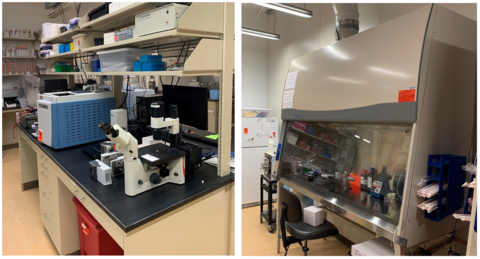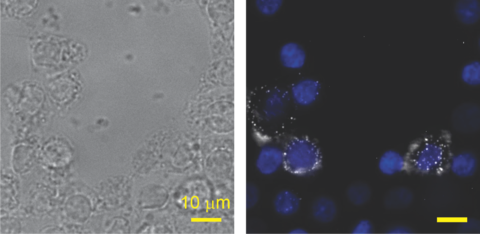Biosafety Level 2 Facility
This facility provides equipment and protocols to culture and evaluate animal and human cell lines and tissue, which are essential aspects of several of our research projects. We also maintain the facility for access by other users on campus. Equipment includes 3 Class II/B2 fully vented biosafety cabinets, swinging bucket and fixed rotor centrifuges, water-jacketed CO2 incubators, and cell storage in an ultra-low freezer (-80 °C) or LN2 storage dewar (-160 °C).

Analytical instruments:
• Phase contrast microscope
• Microvolume UV-VIS spectrophotometer
• Epifluorescence microscope
• Plate reader for absorbance, fluorescence, and luminescence-based assays
• Dynamic light scattering

We use cells as a tool to study thermodynamic properties in complex matrices. We have experience culturing immortalized cell lines and primary cells including Hana 3A (human embryonic kidney), HeLa (human cervical cancer), SW-13 (human adrenal cortex), NPC (rat cortical neural progenitor cells), PC-12 (rat pheochromocytoma), NIH 3T3 (murine embryonic fibroblasts), and RAW 264.7 (murine macrophage).
Past and current projects include:
• Partitioning behavior of drug compounds and metabolites in human blood
• Activation and deactivation of cannabinoid receptors by nuclear magnetic resonance (NMR) spectroscopy screening
• Role of metals in binding to odorant receptors
Contacts
Facility Manager
-
(303) 497-4968

